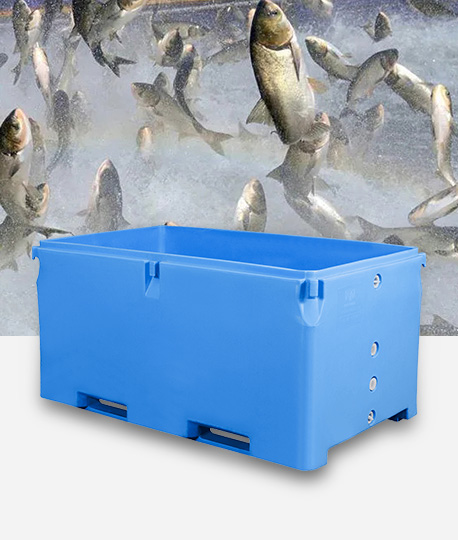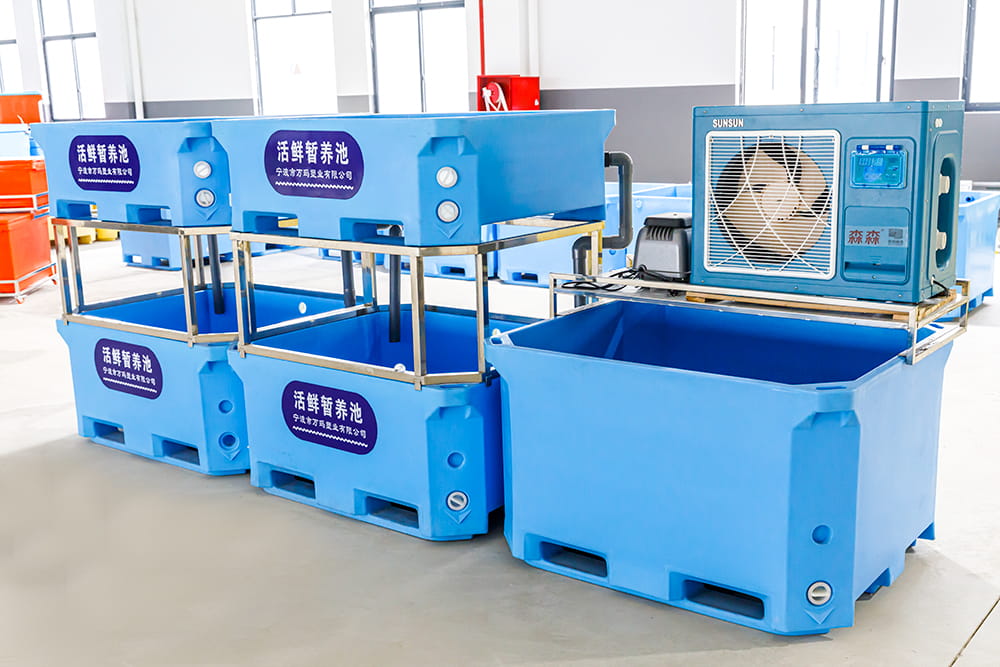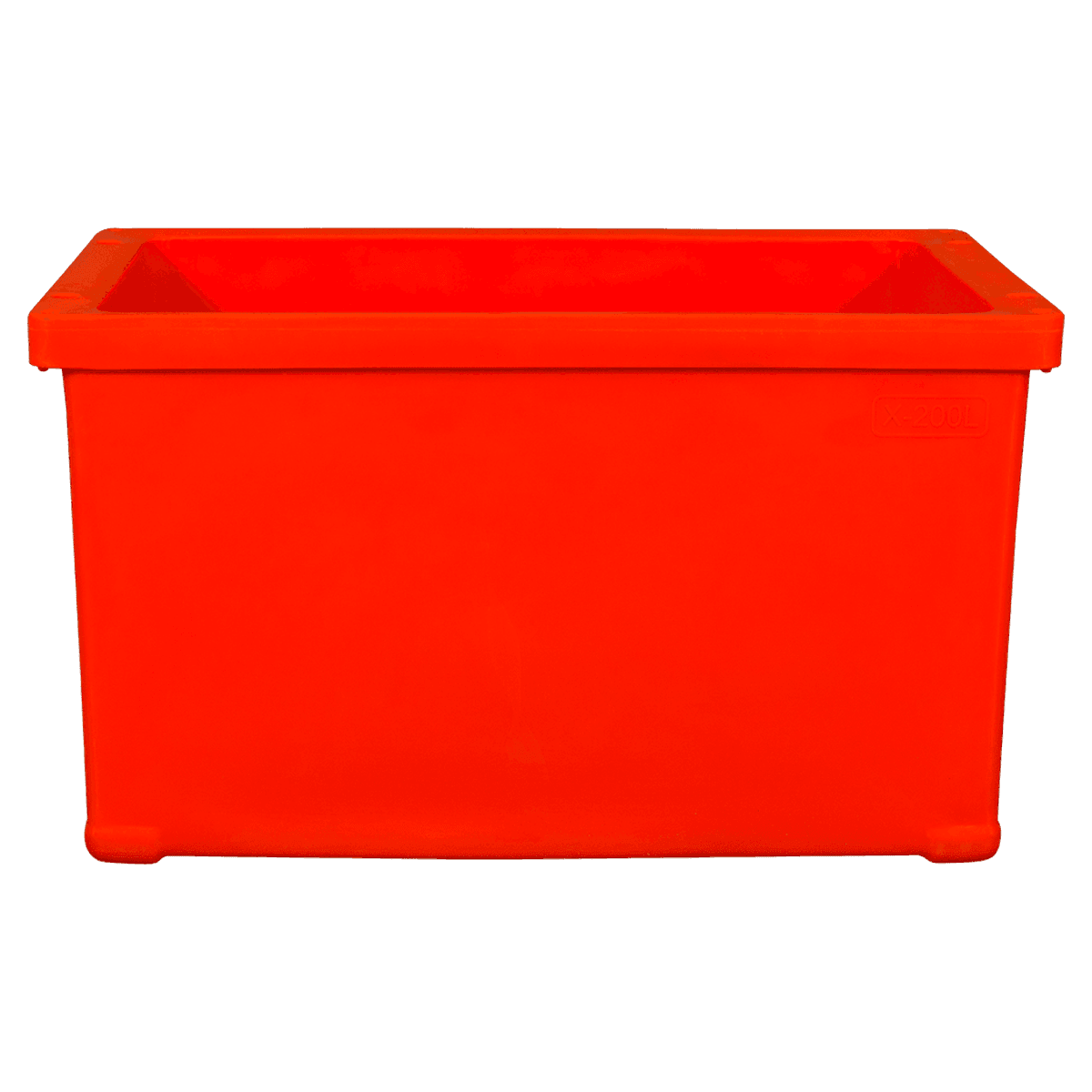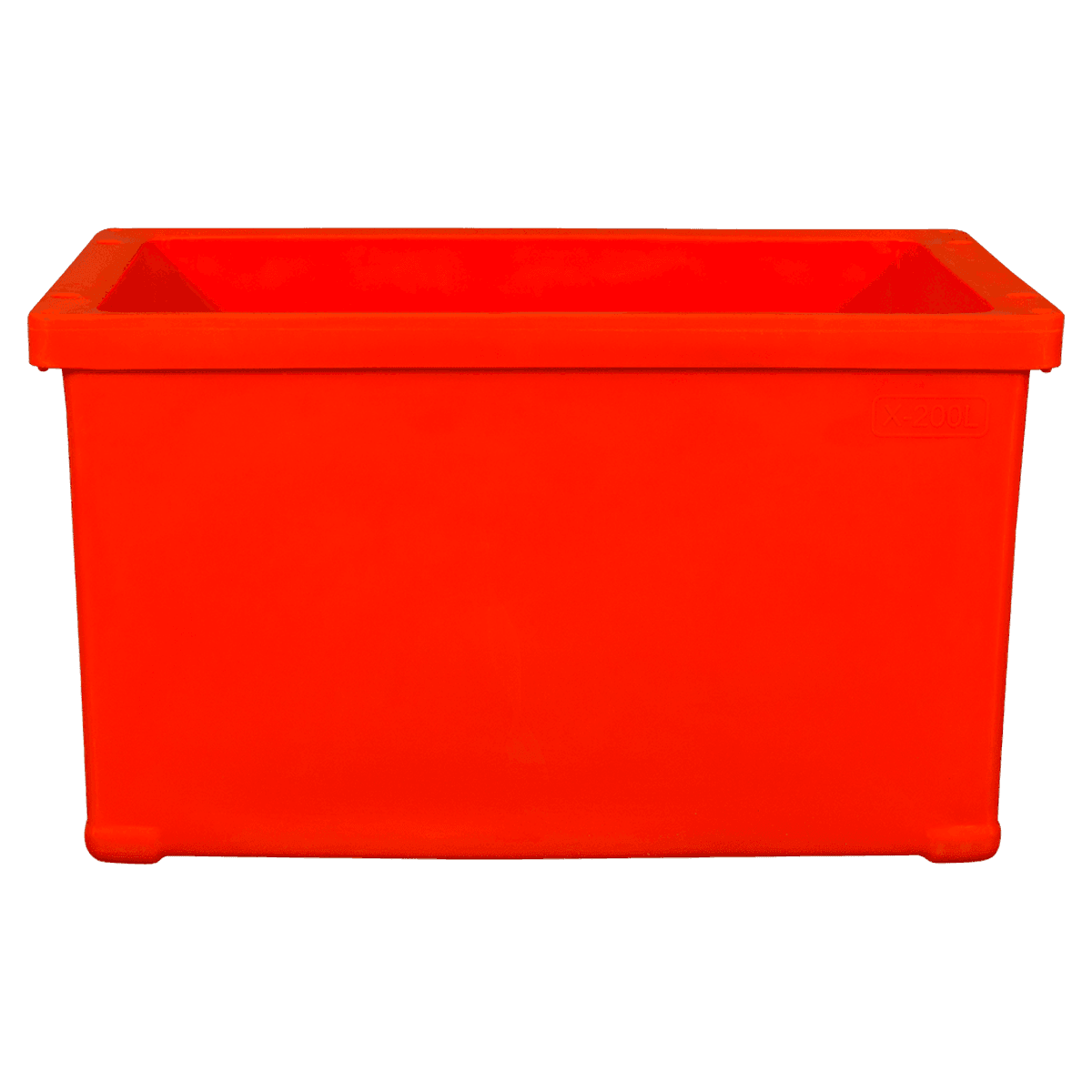Content
- 1 Introduction
- 2 Why Choose Insulated Plastic Containers?
- 3 Types of Insulated Plastic Containers
- 4 Benefits of Using Insulated Plastic Containers
- 5 How to Choose the Right Insulated Plastic Container
- 6 Care and Maintenance
Introduction
What are Insulated Plastic Containers?
Definition and Basic Functionality
Insulated plastic containers are specially designed to maintain the temperature of their contents by utilizing an insulating material or design. These containers are typically used for storing and transporting food and beverages, keeping them either hot or cold for extended periods. The key functionality of these containers lies in their ability to slow down the transfer of heat, effectively preserving the desired temperature.
Brief History and Evolution
The concept of insulated containers dates back to the early 20th century, with the invention of the vacuum flask by Sir James Dewar in 1892. Over time, insulation technologies have evolved to include various materials such as foam, gel packs, and double-walled constructions. Initially made from metals, insulated containers are now commonly made from durable plastics, providing a lighter, more cost-effective option without compromising on performance. The transition to plastic also helped make insulated containers more accessible to consumers in different industries, from medical transport to everyday food storage.

Why Choose Insulated Plastic Containers?
Maintaining Food Temperature (Hot or Cold)
Insulated plastic containers are designed to retain heat or cold by minimizing thermal exchange with the surrounding environment.
- Hot food: Keeps meals warm for 4–8 hours depending on insulation type and container thickness.
- Cold food: Maintains chilled conditions for 6–12 hours, especially when combined with gel packs or ice.
- Comparison of temperature retention (approximate values):
| Insulation Type | Hot Retention (hrs) | Cold Retention (hrs) | Notes |
|---|---|---|---|
| Foam insulation (EPS/EPP) | 4–6 | 6–8 | Lightweight, cost-effective |
| Double-walled plastic | 5–7 | 7–10 | Balanced performance |
| Vacuum insulation | 6–8 | 8–12 | Superior but heavier and pricier |
Preventing Spoilage and Bacterial Growth
Temperature control is directly tied to food safety. Food kept at unsafe temperatures (the “danger zone” between 4°C and 60°C) can allow bacterial growth within 2 hours.
- Hot storage: Keeps cooked food above 60°C, preventing bacterial multiplication.
- Cold storage: Keeps perishable food below 4°C, slowing spoilage.
- Useful for school lunches, outdoor activities, and medical transport where controlled temperature is critical.
Durability and Reusability Compared to Other Options
Unlike disposable containers, insulated plastic containers are built for repeated use.
- Plastic vs. Paper: Paper-based insulated boxes can lose strength when wet, while plastic remains intact.
- Plastic vs. Glass: Glass has good insulation but is heavy and fragile; plastic offers impact resistance and portability.
- Plastic vs. Metal: Metal is strong but prone to dents and rust, whereas plastics resist corrosion and are lightweight.
| Material Type | Durability | Weight | Reusability | Fragility |
|---|---|---|---|---|
| Paper/Cardboard | Low | Very Light | Single-use | High (tears easily) |
| Glass | High | Heavy | Reusable | Very Fragile |
| Metal (Steel) | Very High | Heavy | Reusable | Dent-prone |
| Plastic | High | Light | Reusable | Low |
Cost-Effectiveness
Plastic insulated containers are more affordable than glass or stainless steel alternatives.
- Initial Cost: Lower compared to vacuum-sealed metal containers.
- Long-Term Use: Reusability reduces the need for constant replacements.
- Savings Impact: Using an insulated lunch box instead of buying takeout daily can save significant money over time.
Eco-Friendly Aspects (Reducing Waste)
- Replacing disposable packaging (e.g., paper cups, Styrofoam boxes) with reusable plastic containers cuts down on single-use waste.
- High-quality plastics (like PP and HDPE) are recyclable, extending their lifecycle.
- Some models are designed with modular parts (replaceable seals/lids), reducing total disposal.
Environmental Comparison (single meal use, approximate impact):
| Option | Waste Generated | Reusability | Carbon Footprint |
|---|---|---|---|
| Disposable Styrofoam box | High | None | High |
| Aluminum foil container | Medium | Low | Medium-High |
| Plastic insulated container | Very Low | High | Medium-Low |
Types of Insulated Plastic Containers
By Material
The material used in the construction of an insulated container impacts both its durability and insulation efficiency. Below are some common plastics used in insulated containers:
Polypropylene (PP)
-
Properties: Polypropylene is a lightweight, durable plastic known for its chemical resistance. It’s commonly used in food containers and storage boxes.
-
Advantages:
- Safe for food contact.
- Resistant to acids, bases, and alcohols.
- Microwave and dishwasher safe.
- Cost-effective.
-
Limitations:
- Moderate insulation properties compared to other materials.
- Can become brittle at very low temperatures.
Polyethylene (PE)
-
Properties: Polyethylene is one of the most common thermoplastics, known for its low moisture absorption and flexibility.
-
Advantages:
- Flexible and resistant to cracking.
- Ideal for colder temperatures as it remains pliable.
- Relatively low-cost.
-
Limitations:
- Less durable under high heat.
- Poor UV resistance (can degrade with exposure to sunlight over time).
High-Density Polyethylene (HDPE)
-
Properties: HDPE is a stronger, more rigid form of polyethylene, often used in industrial applications. It is more resistant to impact and harsher environments.
-
Advantages:
- Stronger and more durable than standard PE.
- Better resistance to moisture and chemicals.
- Excellent for colder storage temperatures.
-
Limitations:
- Heavier than standard PE.
- Can become brittle under freezing temperatures.
Other Specialized Plastics
- Polycarbonate (PC): Strong and resistant to high temperatures, but can be more expensive and prone to scratches.
- ABS (Acrylonitrile Butadiene Styrene): Highly impact-resistant but not as effective for high-temperature insulation.
- PVC (Polyvinyl Chloride): Occasionally used but generally not ideal for food storage due to potential chemical leaching when exposed to high temperatures.
By Insulation Type
Insulation type plays a crucial role in how well the container maintains its temperature. Here are the most common insulation methods:
Foam Insulation (EPS, EPP)
-
EPS (Expanded Polystyrene) and EPP (Expanded Polypropylene) are two common foam materials used in insulation.
-
Properties:
- Both provide excellent thermal resistance.
- EPS is lightweight but more fragile; EPP is tougher and more durable.
-
Advantages:
- High insulation performance.
- Lightweight, helping to keep the container portable.
- Cost-effective for mass production.
-
Limitations:
- EPS can break down under pressure and is not as durable as EPP.
- Environmental concerns with EPS as it is not biodegradable and can be difficult to recycle.
Vacuum Insulation
-
Properties: Vacuum insulation involves creating a vacuum between two walls of the container, which eliminates heat transfer by conduction or convection.
-
Advantages:
- Superior insulation performance, keeping hot foods hot and cold foods cold for longer periods (up to 12 hours).
- Does not require a bulky foam material.
-
Limitations:
- More expensive to manufacture and purchase.
- Heavier due to the thicker walls needed for the vacuum chamber.
Gel Packs
-
Properties: Gel packs contain a heat-retaining gel inside plastic pouches. These packs can be frozen or heated, providing either cold or hot storage for the container.
-
Advantages:
- Flexible and lightweight.
- Reusable, easy to store in a freezer.
- Can be customized to fit different container shapes.
-
Limitations:
- Limited temperature retention (usually 2–4 hours).
- Need to be pre-conditioned before use (i.e., frozen or heated).
Double-Walled Construction
-
Properties: Double-walled containers feature two layers of plastic with air or another insulating material trapped between them.
-
Advantages:
- Offers a balance of insulation and durability.
- Lightweight, durable, and resistant to external impacts.
- Better than single-walled plastic but typically not as effective as vacuum insulation.
-
Limitations:
- Can be heavier than containers with single walls.
- Less effective than vacuum insulation for extremely high or low temperatures.
By Use Case
Insulated plastic containers are designed for specific applications, making them versatile for different needs. Here’s a breakdown of containers used for various purposes:
Lunch Boxes
-
Description: Insulated lunch boxes are popular for school, work, and travel, designed to maintain food temperature for several hours.
-
Insulation: Often use foam or double-walled construction to provide a balance of insulation and portability.
-
Benefits:
- Keeps lunches warm or cold until ready to eat.
- Lightweight and portable.
- Usually includes compartments for separating foods.
Food Storage Containers
-
Description: Used for home storage, these containers keep leftovers fresh by maintaining a consistent temperature.
-
Insulation: Often use foam insulation or double-walled plastic.
-
Benefits:
- Prevents food from spoiling by maintaining an optimal temperature.
- Can be used in the fridge, freezer, or pantry.
- Airtight lids enhance freshness and extend shelf life.
Beverage Containers
-
Description: Insulated beverage containers, such as bottles and cups, keep drinks at the right temperature for long periods.
-
Insulation: Typically uses double-walled or vacuum insulation for optimal performance.
-
Benefits:
- Keeps hot beverages warm for 6–12 hours and cold beverages cold for a similar period.
- Durable and resistant to wear and tear.
Coolers
-
Description: Larger insulated containers used for keeping drinks and food cold, typically used for picnics, camping, or medical transport.
-
Insulation: Generally utilize foam insulation, though some high-end coolers use vacuum insulation.
-
Benefits:
- Keeps large amounts of food and beverages cool for 12+ hours.
- Easy to transport with features like handles and wheels.
Medical Transport Containers
-
Description: Designed for the safe transport of temperature-sensitive medical supplies, such as vaccines or organs.
-
Insulation: Often feature foam or vacuum insulation for maintaining precise temperatures.
-
Benefits:
- Crucial for ensuring the safety and effectiveness of medical materials during transport.
- Leak-proof and equipped with airtight seals to prevent contamination.
Benefits of Using Insulated Plastic Containers
Temperature Control
One of the primary benefits of insulated plastic containers is their ability to maintain the temperature of food and beverages for extended periods.
Keeping Food Hot for Extended Periods
- Insulated containers, particularly those with vacuum or foam insulation, can maintain heat for 4 to 12 hours, making them ideal for transporting hot foods, such as soups, stews, or cooked meals.
- For instance, a vacuum-insulated lunchbox can keep food at a temperature between 60°C and 70°C, well above the “danger zone” where bacterial growth occurs.
- Best for: Hot meals for school, work, travel, or outdoor activities.
Keeping Food Cold and Preventing Melting
- Insulated containers are also perfect for keeping food cold, which is critical for preserving perishable items such as salads, dairy, and meats.
- High-quality insulated containers can maintain low temperatures for up to 12 hours or more, especially when combined with ice packs or gel packs.
- Best for: Keeping drinks cold during long picnics, preserving ice cream, or transporting medications that need to remain at low temperatures.
| Insulation Type | Hot Retention (hrs) | Cold Retention (hrs) |
|---|---|---|
| Vacuum Insulation | 6–12 | 8–12 |
| Foam Insulation | 4–6 | 6–8 |
| Double-Walled | 5–7 | 7–10 |
Food Safety
Temperature control is directly related to food safety, and insulated plastic containers help in minimizing foodborne illnesses.
Minimizing Bacterial Growth
- Hot food storage: Keeps food at or above 60°C, preventing harmful bacteria like Salmonella or E. coli from thriving.
- Cold food storage: Keeps food below 4°C, significantly reducing the risk of spoilage and bacterial growth.
- Proper insulation reduces the chance of food entering the “danger zone” (between 4°C to 60°C) where bacteria multiply rapidly.
- Best for: Transporting perishable food, preventing contamination during long outdoor events or food deliveries.
Preventing Cross-Contamination
- Insulated containers often have airtight seals and separate compartments, helping to keep different food items isolated from one another.
- Best for: Storing ready-to-eat foods and raw ingredients (e.g., meats and vegetables), preventing the spread of bacteria.
Durability and Portability
Plastic insulated containers offer a combination of durability and portability that makes them suitable for various settings.
Impact Resistance
- Most plastic materials (especially HDPE and PP) are impact-resistant, meaning they won’t crack or break easily, even under rough handling.
- Best for: Travel, outdoor activities (camping, hiking), and children’s lunchboxes where there is a risk of dropping or knocking the container.
Lightweight Design
- Insulated plastic containers are typically much lighter than their metal or glass counterparts, which makes them easier to carry and transport.
- For example, an insulated plastic cooler can hold the same amount of food or drinks as a metal cooler but weigh significantly less.
- Best for: Hiking, camping, or day trips where portability is essential.
Versatility
Insulated plastic containers are suitable for many different uses, making them a versatile option for both personal and professional needs.
Suitable for Various Types of Food and Beverages
- Hot food: Soups, stews, and cooked dishes.
- Cold food: Salads, fresh fruit, dairy products.
- Beverages: Hot drinks (coffee, tea) and cold drinks (juices, smoothies).
- Best for: Versatile use cases such as school lunches, office lunches, outdoor parties, or medical transport.
Microwave and Dishwasher Safe Options
- Many insulated containers are designed to be microwave safe, allowing you to reheat your food without removing it from the container.
- Dishwasher-safe options make cleanup easier, especially for containers with removable parts (lids, compartments).
- Best for: Daily use where convenience and easy maintenance are priorities.
Cost-Effectiveness
Insulated plastic containers provide long-term savings compared to disposable packaging or cheaper alternatives.
Long-Term Savings Compared to Disposable Containers
- While the initial cost of a high-quality insulated plastic container may be higher, its reusability eliminates the need for continuous purchases of disposable containers (e.g., plastic bags, aluminum foil, single-use Styrofoam containers).
- Best for: Meal prepping, reducing food waste, and cutting down on daily disposable packaging costs.
Reducing Food Waste
- By maintaining proper food temperatures, insulated containers help keep food fresh longer, reducing the chances of spoilage.
- Keeping food at optimal temperatures reduces the likelihood of having to throw away meals that get too hot or too cold, ensuring that the food can be eaten at a later time without risk.
- Best for: Preventing waste during long days out or for individuals who often eat leftover meals.
How to Choose the Right Insulated Plastic Container
Size and Capacity
The right size and capacity are key to selecting an insulated plastic container that fits your needs.
Determining Your Needs Based on Portion Sizes
- Consider how much food or drink you plan to store in the container. For example, if you’re packing lunch for one person, a smaller container (500 ml to 1 liter) may suffice. For larger meals or family outings, you may need containers with 2 liters or more of capacity.
- Best for: Lunch boxes, food storage containers, and beverage containers where appropriate portioning is important.
Considering Storage Space
- Make sure the container fits in your bag, cooler, or storage space. If you need a container for a lunch bag, aim for a compact design. For coolers or large events, a larger, bulkier container may be more appropriate.
- Best for: Personal use (compact sizes) vs. group outings or family events (larger sizes).
| Container Size | Ideal Use Case | Approximate Capacity (liters) |
|---|---|---|
| Small (500 ml – 1L) | Lunchboxes, daily use | 0.5 – 1 |
| Medium (1L – 2L) | Small family meals, picnics | 1 – 2 |
| Large (2L and up) | Family events, outdoor activities, coolers | 2 and up |
Insulation Performance
When selecting an insulated container, the insulation type will directly affect its temperature retention.
Checking Temperature Retention Ratings
- Look for containers that provide temperature retention ratings for both hot and cold conditions. High-quality models usually offer heat retention for 6–12 hours and cold retention for 8–12 hours.
- If precise temperature control is crucial, such as for medical use or catering, focus on vacuum-insulated containers as they offer superior performance.
Understanding Insulation Types and Their Effectiveness
- Foam Insulation: Good for everyday use but may not offer long-lasting temperature control.
- Double-Walled Plastic: Offers a balance of insulation and portability, suitable for most casual uses.
- Vacuum Insulation: Best for long-term temperature maintenance (8–12 hours), especially for beverages or meals that need precise control.
- Gel Packs: Good for added cold retention when extra cooling is needed.
| Insulation Type | Hot Retention (hrs) | Cold Retention (hrs) | Best Use Case |
|---|---|---|---|
| Foam Insulation | 4–6 | 6–8 | Everyday use, budget-friendly |
| Double-Walled Plastic | 5–7 | 7–10 | General use, lunchboxes |
| Vacuum Insulation | 6–12 | 8–12 | Premium, long-lasting temperature control |
| Gel Packs | 2–4 | 4–6 | Supplemental cooling, quick access |
Material Safety
Material safety is essential for health, especially when it comes to food storage.
Ensuring BPA-Free and Food-Grade Materials
- BPA (Bisphenol A) is a harmful chemical found in some plastics. Look for containers labeled as BPA-free, which ensures they are safe for food contact.
- Food-grade materials are those that meet safety standards for food storage and do not leach harmful substances into food or beverages.
- Best for: Choosing containers for food storage, medical transport, or anything that involves direct contact with food.
Checking for Certifications (e.g., FDA, LFGB)
- FDA approval: Containers that are FDA-approved are considered safe for food use in the U.S. and are a strong indicator of food-grade material.
- LFGB certification: In Europe, LFGB (Lebensmittel- und Futtermittelgesetzbuch) certification ensures the container complies with stringent food safety standards.
| Certification | Region | What It Ensures |
|---|---|---|
| FDA Approved | USA | Safe for food contact, non-toxic |
| LFGB Certified | Europe | Compliant with European food safety standards |
Lid and Seal Quality
A good lid and seal are essential for maintaining the freshness and integrity of your food.
Leak-Proof Design
- A leak-proof design prevents spills and messes, making the container suitable for soups, beverages, and other liquid-based foods.
- Containers with silicone seals or rubber gaskets in the lid offer a more reliable leak-proof performance.
- Best for: Transporting liquids, keeping food fresh, and preventing spills in lunch bags or coolers.
Airtight Seals to Maintain Freshness
- Airtight containers help to preserve the freshness of the contents by keeping out air and moisture. This is especially important for dry foods like grains or snacks, or for medical transport where contamination is a concern.
- Best for: Food storage, especially for leftovers, fruits, or long-term storage.
Durability and Design
Durability ensures the container lasts through daily use, while design affects ease of use.
Impact Resistance
- Choose containers made of HDPE or PP if you need a product that can handle rough handling, such as when traveling or during outdoor activities.
- Best for: Families, outdoor enthusiasts, or anyone who needs a sturdy container that can withstand drops or impacts.
Ergonomic Design for Easy Handling
- Containers with handles, straps, or other ergonomic features make them easier to carry, especially if they are larger or intended for outdoor use.
- Best for: Coolers, large lunch boxes, or medical transport containers where portability is key.
Ease of Cleaning
- Look for containers that are dishwasher-safe or have smooth interior surfaces for easy wiping down.
- Containers with removable parts (like lids or seals) are easier to clean, reducing the chance of bacterial buildup.
- Best for: Daily use containers, lunchboxes, and high-turnover environments like offices or schools.
Care and Maintenance
Cleaning Instructions
Proper cleaning is essential for maintaining the performance and hygiene of your insulated plastic containers.

Proper Washing Techniques
- Hand Washing: For most containers, it’s best to wash them by hand using mild dish soap and warm water. Use a soft sponge or cloth to avoid damaging the surface or insulation layer.
- Deep Cleaning: For containers with difficult-to-reach areas, use a bottle brush or a small brush to scrub the inside. Pay attention to corners and edges where food particles can accumulate.
- Cleaning the Lid: The lid and seal area should be cleaned thoroughly, especially where food residue can get stuck. Use warm water and soap to clean the lid’s silicone seal or rubber gasket, and ensure it is completely dry before reassembling.
Dishwasher Safety Guidelines
-
Some insulated containers are dishwasher safe, but always check the manufacturer’s instructions. If the container is dishwasher safe:
- Place it on the top rack of the dishwasher to avoid direct heat.
- Remove any removable parts (like seals or lids) before washing to prevent damage.
-
Non-Dishwasher Safe Containers: For those that aren’t labeled as dishwasher-safe, hand-wash them gently to preserve the insulation and avoid warping or cracking.
| Container Type | Dishwasher Safe? | Recommended Cleaning Method |
|---|---|---|
| Vacuum Insulated | Usually no | Hand wash with mild soap |
| Foam Insulated | Sometimes | Hand wash or top rack of dishwasher |
| Double-Walled Plastic | Yes (check label) | Top rack of dishwasher |
Storage Tips
How you store your insulated plastic containers can also impact their lifespan and performance.
Avoiding Extreme Temperatures
- Avoid leaving the containers in extreme heat or cold, such as in a hot car or outdoors in freezing temperatures. Extreme heat can cause the plastic to warp or degrade the insulation, while freezing temperatures can lead to cracking.
- Best Practice: Store your containers in a cool, dry place when not in use. If storing for an extended period, make sure the lid is off to allow for air circulation, which helps prevent mold buildup.
Proper Stacking and Organization
- If you have multiple containers, stack them carefully without forcing them into tight spaces that could cause damage or distortion. Use organizers or storage racks to keep them separated.
- For coolers or large containers, keep the lids off when storing to ensure they are fully dry inside, preventing bacterial growth or mold.
Extending Lifespan
Taking extra care of your insulated containers will keep them in good shape for a long time.
Replacing Worn-Out Parts (Seals, Lids)
- Seals: Over time, silicone or rubber seals can wear out and lose their effectiveness. If you notice the seal is cracked or no longer leak-proof, replace it promptly to avoid spills and loss of insulation performance.
- Lids: Lids can become warped or cracked after repeated use. If a lid is no longer fitting properly, check for replacement options from the manufacturer or consider purchasing a new container.
Avoiding Harsh Chemicals
- Never use harsh chemical cleaners (e.g., bleach, ammonia, abrasive cleaners) on your containers. These can damage the plastic and insulation layers.
- Stick to mild dish soap and warm water for regular cleaning. For tougher stains, try using a baking soda paste (baking soda mixed with water) and scrub gently.
Drying and Preventing Odor Buildup
- After cleaning, ensure that your containers are thoroughly dried before storing. Leave the lids off and place them upside down to allow for air circulation.
- For containers that tend to develop odors (like coolers or food storage containers), you can add a small baking soda sachet inside when storing to absorb any lingering smells.


 English
English Español
Español عربى
عربى 中文简体
中文简体
-4.png)
-4.png)
-2.png)

-2.png)
-2.png)




